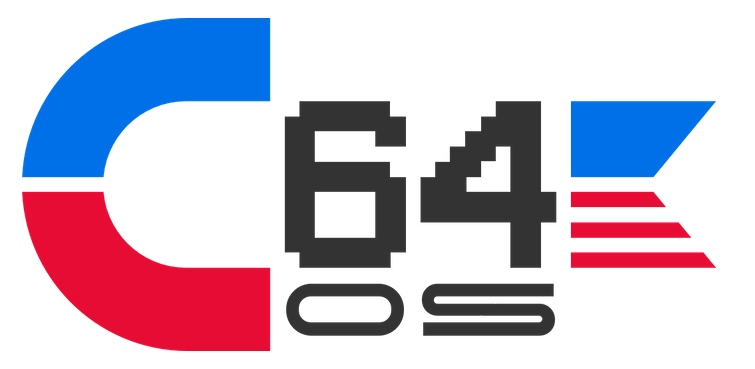The C64 OS Programmer's Guide is being written
This guide is being written and released and few chapters at a time. If a chapter seems to be empty, or if you click a chapter in the table of contents but it loads up Chapter 1, that's mostly likely because the chapter you've clicked doesn't exist yet.
Discussion of development topics are on-going about what to put in this guide. The discusssions are happening in the C64 OS Community Support Discord server, available to licensed C64 OS users.
C64 OS PROGRAMMER'S GUIDE
Chapter 6: Using Toolkit: Class Reference
Toolkit consists of a number of built-in classes, plus a growing number of runtime loadable classes. With the built-in classes it is possible to build a typical user interface consisting of push buttons, cycle buttons, checkboxes and radio buttons, with labels and organized into a number of containers, such as a horizontal or vertical split view, a set of tabs, or a scrollable region with vertical or horizontal scroll bars.
To build more sophisticated user interfaces, such as the ability to take typed input, it is necessary to load and link the additional classes needed to build the interface.
Each class provided by C64 OS is given its own page to describe its super class, its properties and its methods, along with discussion and sample code showing how these are used.
Built-in classes
Pointers to the built-in classes can be fetched using ptrthis, passing in the X register the ClassID.
class TKObj
ClassID: tkobj
TKObj is the root class. It inherits from nothing, and all other classes inherit, ultimately, from it.
class TKView:TKObj
ClassID: tkview
TKView adds to TKObj node properites, allowing all classes that inherit from TKView to be appended to the view hierarchy. TKView also adds the ability for objects to draw themselves and to handle input events.
class TKSplit:TKView:TKObj
ClassID: tksplit
TKSplit manages two child TKViews. It positions and sizes them automatically either above and below or left and right, with a draggable bar at the separation point. When the bar is dragged TKSplit automatically manages to size of its two child views to reapportion screen real estate between them.
class TKTabs:TKView:TKObj
ClassID: tktabs
TKTabs manages from 1 to 10 TKViews. It positions and sizes them automatically stacked one on top of the other. It draws a bar of tabs along the top. When a tab is selected, all child views are hidden, except the one child associated with that tab which is shown.
class TKScroll:TKView:TKObj
ClassID: tkscroll
TKScroll manages from a single content TKView. It optionally instantiates and appends to itself a vertical and/or horizontal TKSBar class. TKScroll coordinates the size and scrolled offsets of its content view with the size and position of the scroll nub in the two scroll bar objects.
class TKLabel:TKView:TKObj
ClassID: tklabel
TKLabel is a single row of text. The text can be left, right or center aligned within the label's bounds. TKLabel draws a provided string of text. TKLabel cannot contain child views.
class TKCtrl:TKView:TKObj
ClassID: tkctrl
TKCtrl is the abstract superclass of all a set of control classes which can profitably benefit from the properties that it provides. This common inheritance allows different controls to be substituted generically one for the other.
class TKButton:TKCtrl:TKView:TKObj
ClassID: tkbutton
TKButton is a subclass of TKCtrl and therefore inherits an action that can be triggered by clicking it. It also has a value. The button can be configured to serve as either a push button, a cycle button, a radio button or a checkbox.
class TKSBar:TKCtrl:TKView:TKObj
ClassID: tksbar
TKSBar is also a subclass of TKCtrl but, unlike TKButton, its use is much more restricted. Typically TKScroll creates and automatically manages instances of TKSBar. Interacting with TKSBar sends messages to its TKScroll parent view to assist in scrolling content.
Runtime loadable classes
Runtime loadable classes must first be loaded, relocated, and linked to their parent class, instructions for which are found below. When a class is linked a pointer to it is returned which must be preserved either in a variable or in a pointer store.
Instantiating a runtime loadable class is performed with
tknew the same as when instantiating
a built-in class. The difference is that the pointer to the built-in class is fetched by
passing a ClassID to classptr.
Where as with runtime loadable classes you retrieve the class pointer from the pointer
store where it was saved at the time that it was loaded and linked, and then pass that
pointer to tknew.
The following list groups similar classes together, and the are listed in alphabetical order within that group.
Information Views
class TKCpuU:TKView:TKObj
class TKDirInfo:TKView:TKObj
class TKFileMeta:TKView:TKObj
class TKRamU:TKView:TKObj
class TKReuU:TKView:TKObj
Controls
class TKDatePick:TKView:TKObj
class TKIcon:TKCtrl:TKView:TKObj
class TKInput:TKCtrl:TKView:TKObj
class TKPBar:TKView:TKObj
class TKRating:TKCtrl:TKView:TKObj
class TKTimePick:TKView:TKObj
class TKTArea:TKCtrl:TKView:TKObj
Container Views
class TKLabelBox:TKLabel:TKView:TKObj
Content Views
class TKList:TKView:TKObj
class TKPlaces:TKView:TKObj
class TKTable:TKList:TKView:TKObj
class TKTCols:TKScroll:TKView:TKObj
class TKText:TKView:TKObj
How to load and link a class
Subclassing Toolkit Classes
In addition to the Toolkit classes provided in C64 OS, it is also possible to create your own custom subclasses any of previously exist class. How to subclass is the topic of the next section.
Next Section: Subclassing
Next Chapter: Writing an Application
Table of Contents
This document is subject to revision updates.
Last modified: Oct 11, 2024

